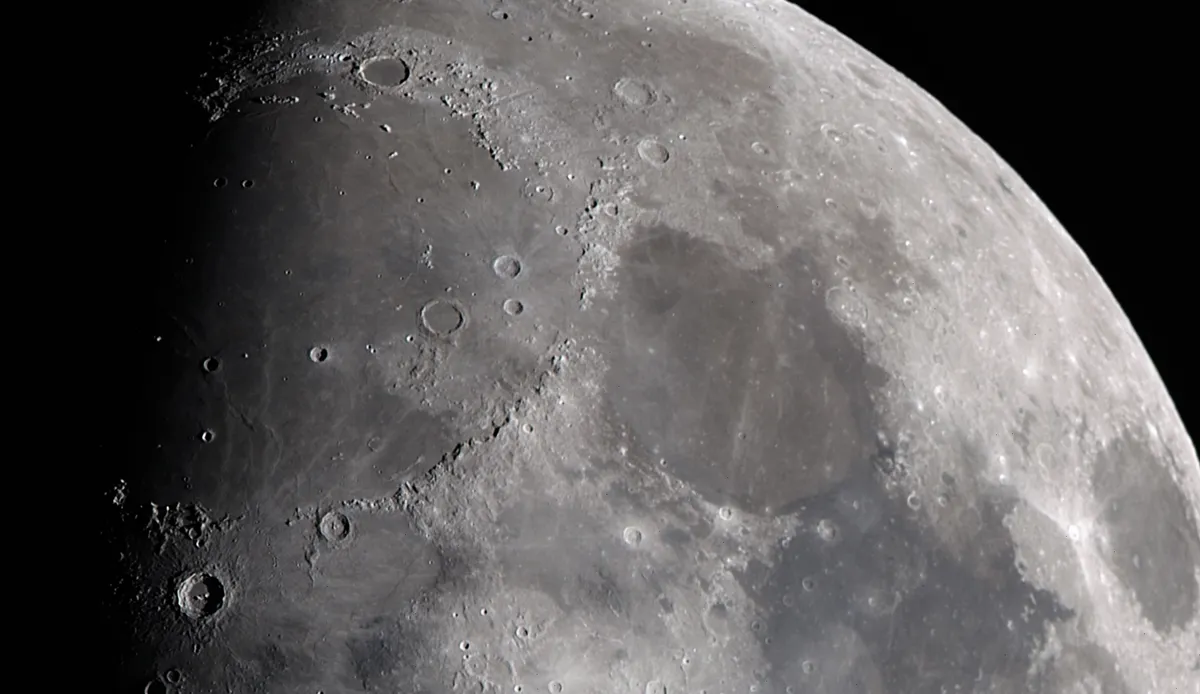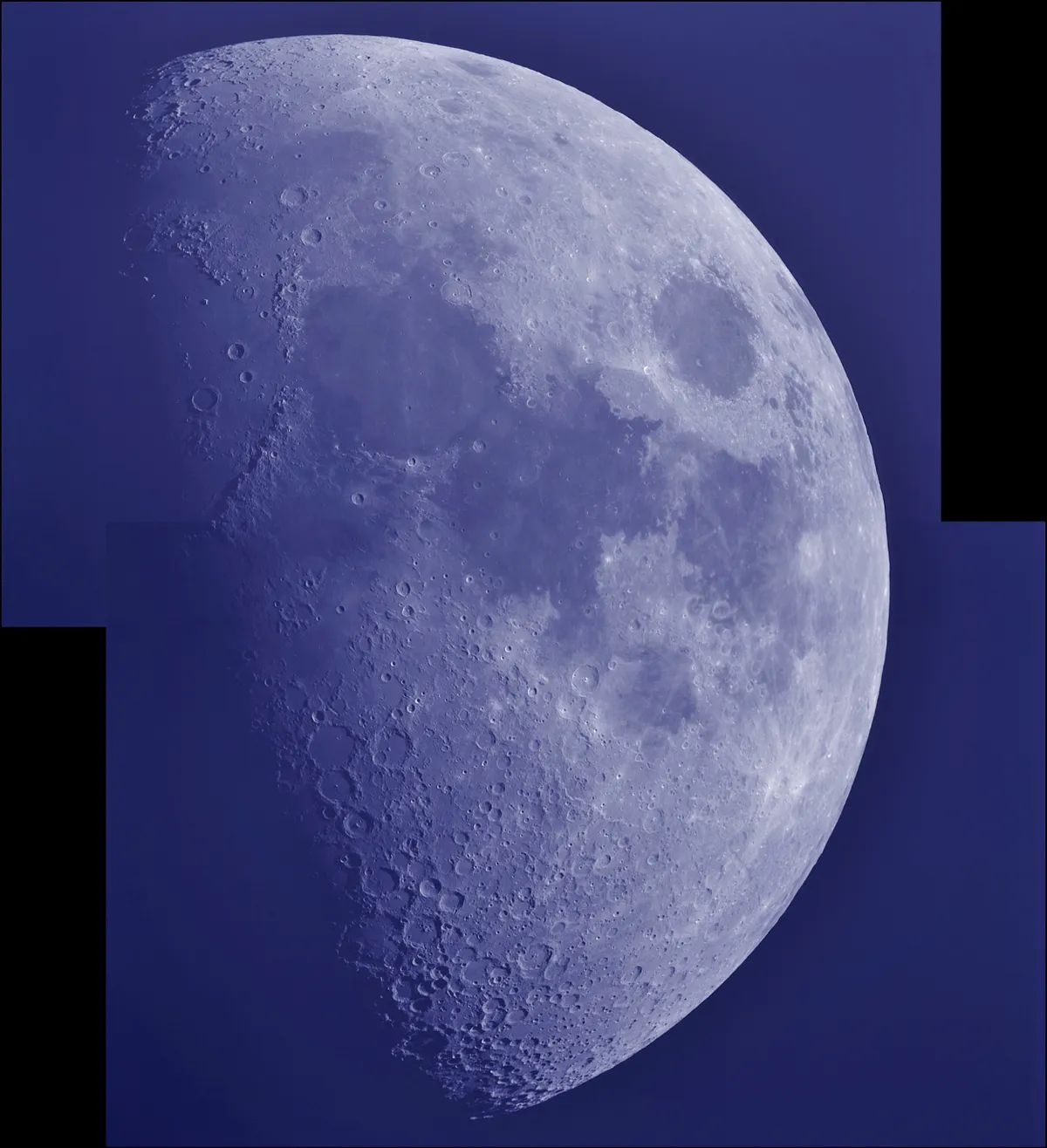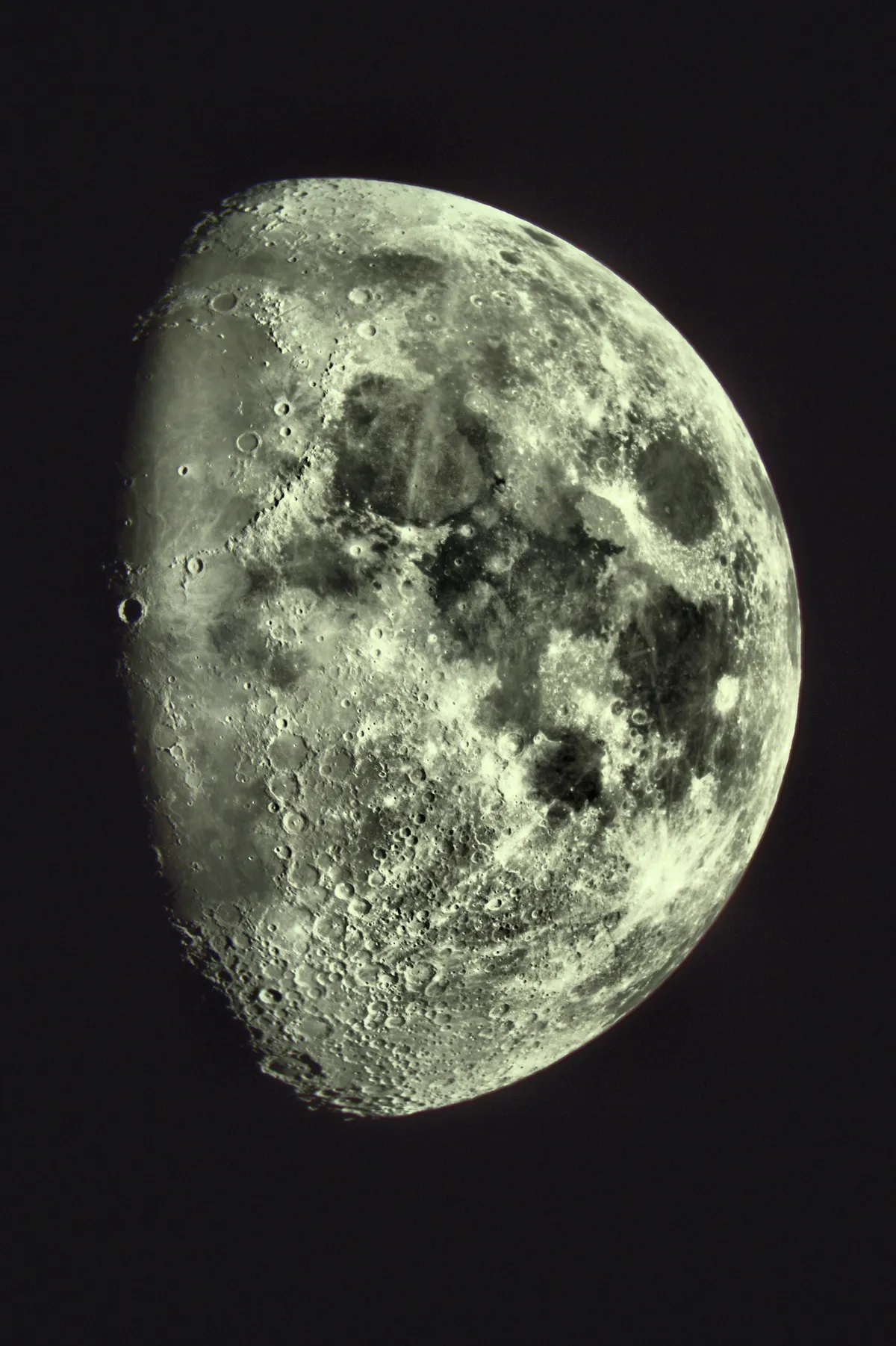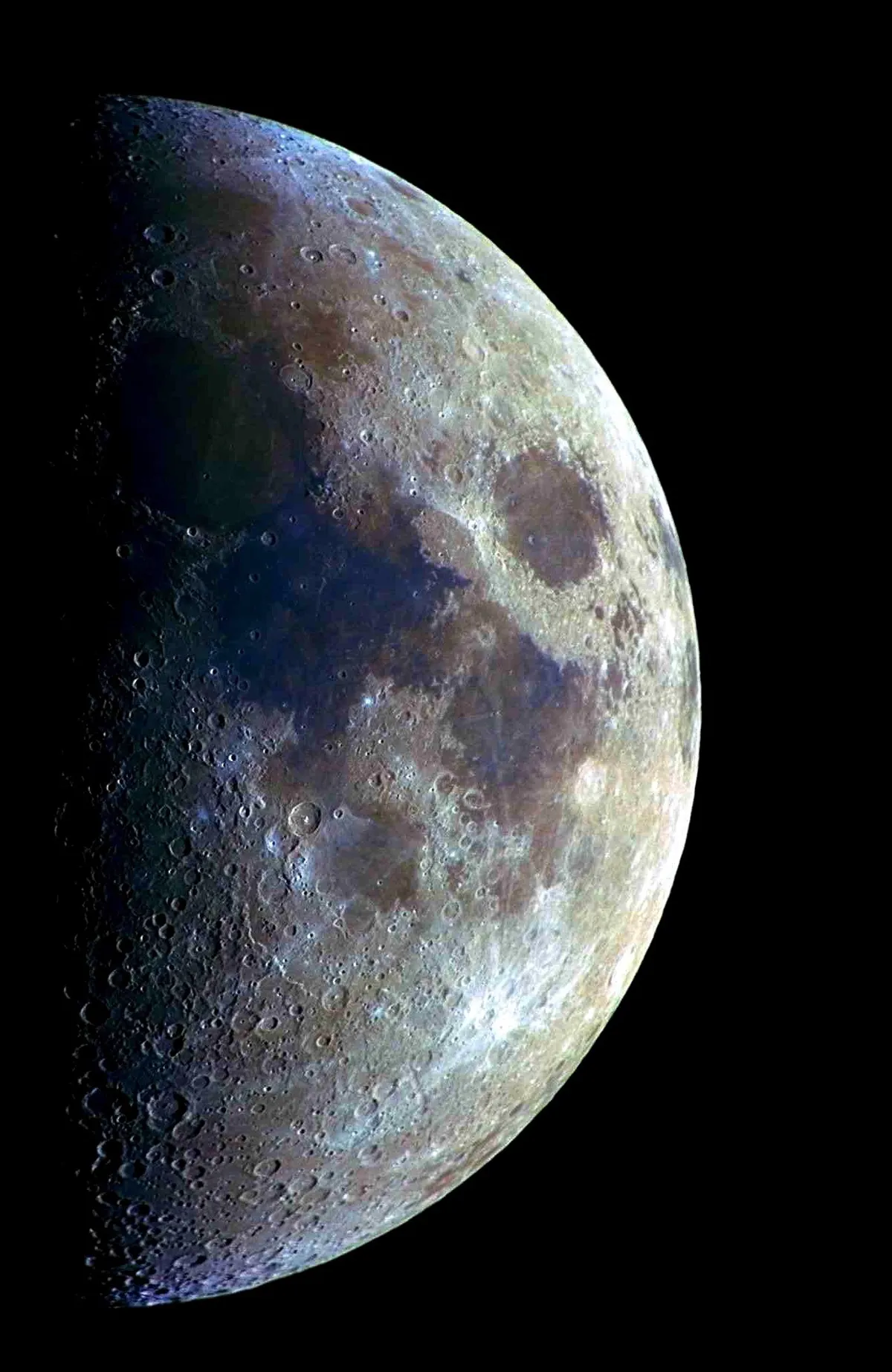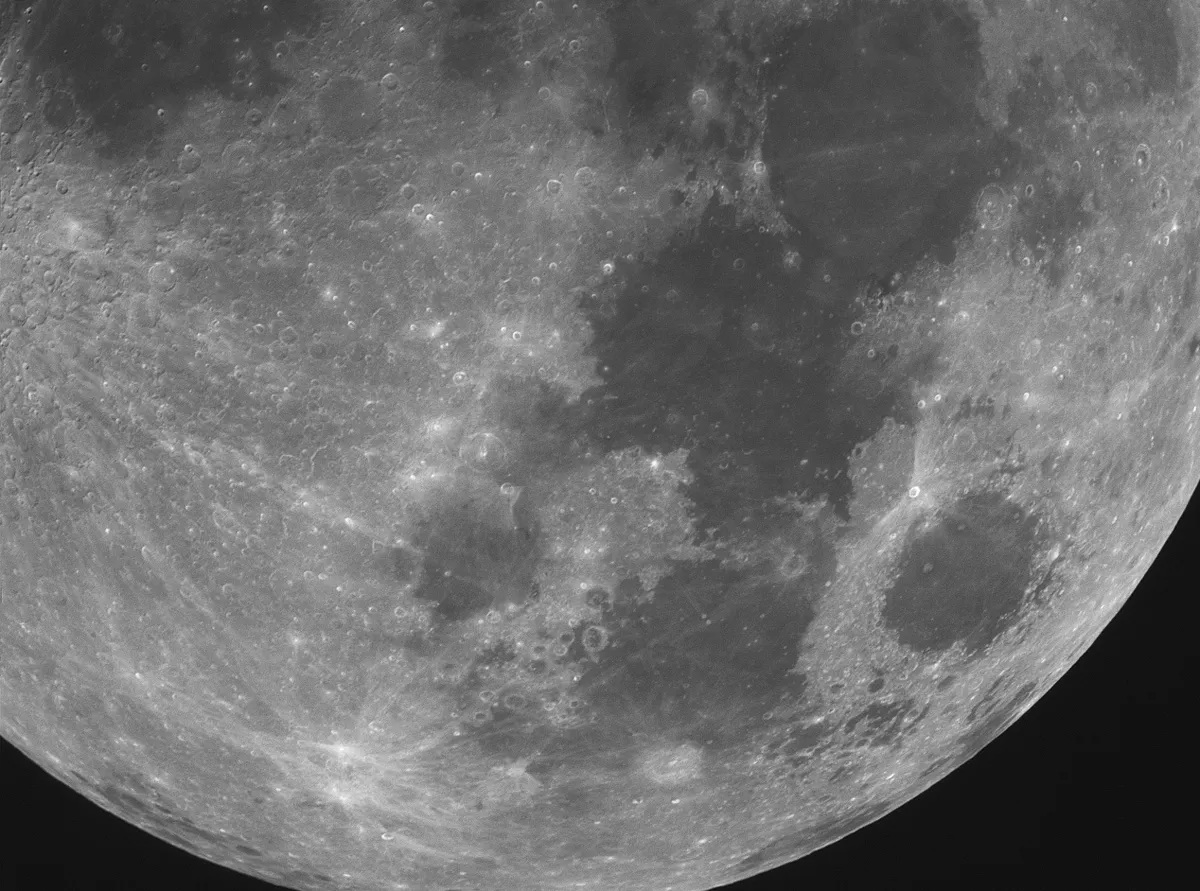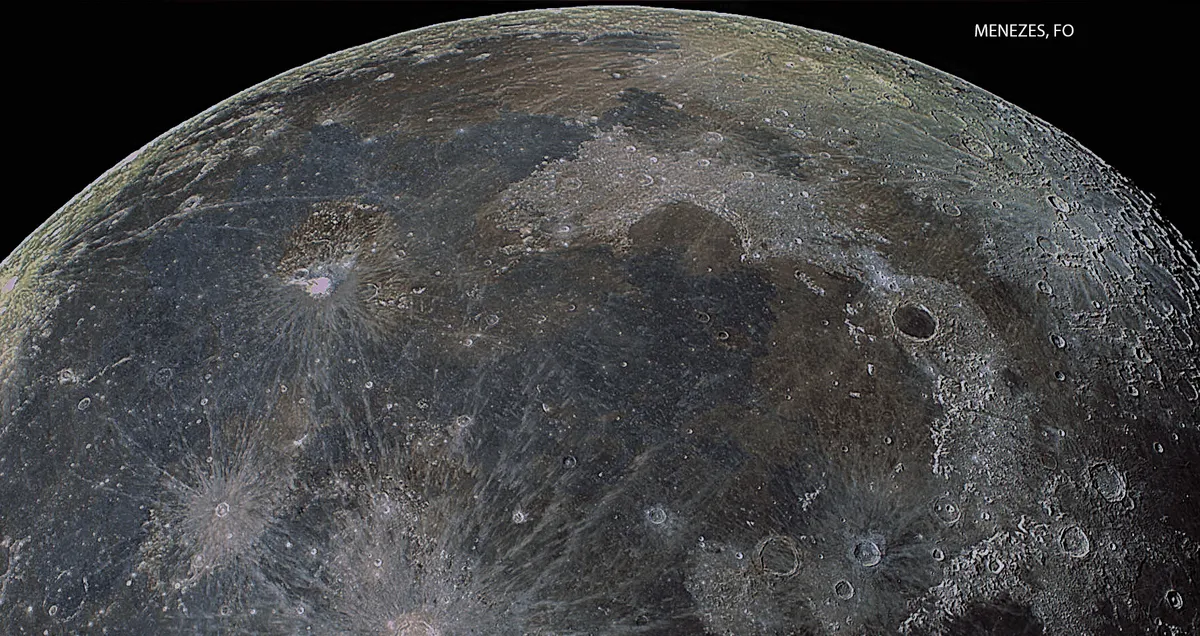Lunar maria are the dark topographical features that can be observed on the lunar surface, covering about 15% of the Moon's crust, and which have dazzled astronomers and moon-gazers for centuries.
The maria, or ‘seas’, were named by early astronomers who mistook them for actual oceans on the Moon, but of course today we know that no such large bodies of liquid water exist on the lunar surface.
The lunar maria are impact basins created by collisions with cosmic debris that filled with lava and other lunar material between 1-4 billion years ago.
How did the Moon form?
By studying topographical features of the lunar landscape such as the highlands, maria and craters, astronomers have been able to piece together a history of the Moon as it formed and evolved over billions of years.
One theory says that a large body collided with Earth about 4.5 billion years ago, and the debris from the wreckage coalesced over time to form a satellite in orbit around our planet.
This early Moon was likely covered in molten magma, which then cooled to create the rugged, cold and lifeless rock that we know today.
Over time, the lunar maria have been studied in great detail, both using ground-based telescopes, robotic probes and, of course, by human explorers during the Apollo missions.
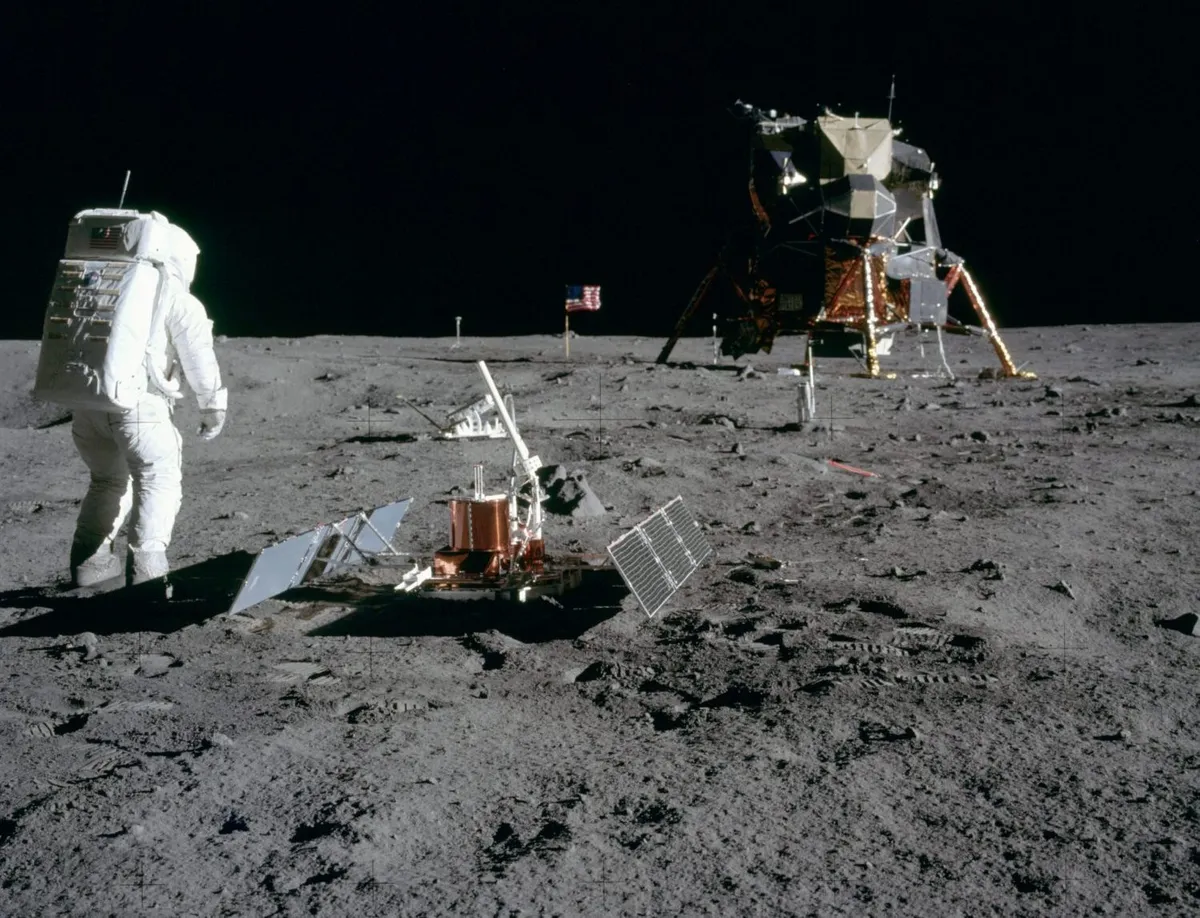
On a clear night, when the Moon is prominent in the night sky, it is one of the best objects to observe. After all, it's our closest celestial neighbour. And while much can be seen with the naked eye, a pair of modest binoculars will let you spot maria and craters on the lunar surface.
For more on this, read our tutorial on how to observe the Moon, or our beginners' guide to stargazing with binoculars.
You might think that the ideal time to observe the lunar surface is during a full Moon or even a full supermoon, but instead, find out when the Moon will next be visible in the night sky during its crescent or gibbous phase. This will enable you to spot the 'terminator', which is the line dividing the bright and dark portions of the Moon from our perspective.
Learn more about this with our guide to the phases of the Moon.
Looking along the terminator will enable you to use shadows to make out the Moon's rugged surface much easier than when the Moon is full. And, because the Moon is tidally locked with Earth, meaning we always see the same side, you can track how the terminator changes night after night.
We may not be able to see the far side of the Moon directly from Earth, but you can catch a glimpse of what's beyond the limb by studying and even photographing lunar libration.
Observing the Moon online
You can also explore the lunar surface online, either by using Google Moon, by visiting the Lunar Reconnaissance Orbiter website or by downloading the excellent JMars software (used by actual NASA planetary scientists!)
Below is our complete guide to the lunar seas, how big they are, where they’re located, and facts about their interesting features. If you're interested in trying to image them, read our guide on how to photograph the Moon.
A list of the lunar maria
Mare Anguis
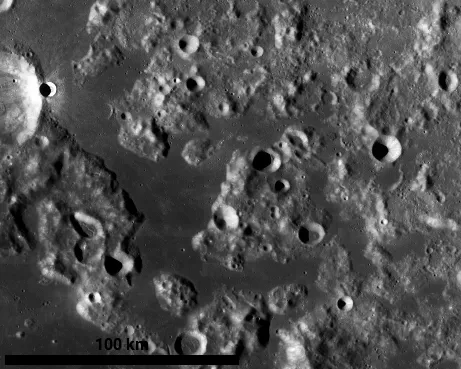
English name Serpent Sea
Lat. 22.6 N
Long. 67.7 E
Diameter 150km
Located close to the edge of the lunar limb is Mare Anguis, which roughly shaped like an X. It lies near the rim of the much larger Mare Crisium, elevated 800m above. To its east is the 7km wide Eimmart A crater.
Mare Australe
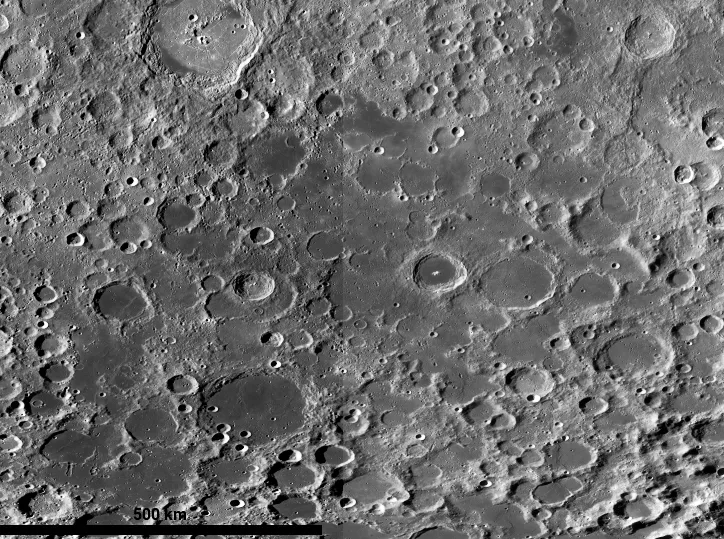
English name Southern Sea
Lat. 38.9 S
Long. 93.0 E
Diameter 603km
Located on the very edge of the Moon, Mare Australe is only visible when libration tips the Moon forward enough to see it. Unlike most of the other smooth maria, Australe is pockmarked by impact craters which then flooded with basaltic lava.
Mare Cognitum
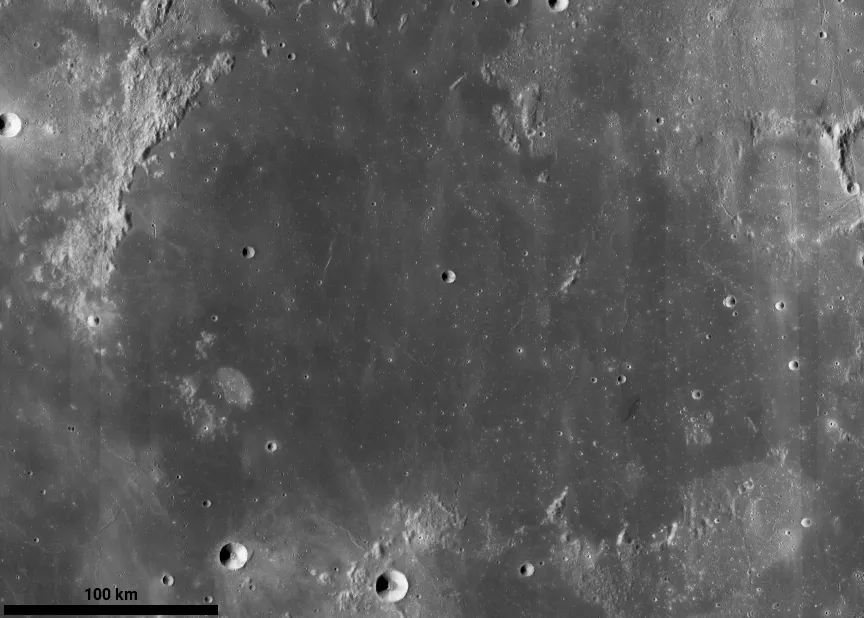
English name Known Sea
Lat. 10.0 S
Long. 23.1 W
Diameter 376km
In 1964, after years of trying, NASA finally succeeded in ‘landing’ on the Moon with their Ranger 7 impact probe. The Surveyor 3 soft lander would follow in 1967, paving the way for the Apollo 12 crew to arrive in 1969. Prior to the Ranger 7 landing, the region was unnamed, but was renamed to reflect its role in America’s lunar plans.
Mare Crisium

English name Sea of Crises
Lat. 17.0° N
Long. 59.1° E
Diameter 418km
Unlike most of the other lunar seas, Mare Crisium is an isolated oval that doesn’t merge with others. It’s a large impact basin with visible walls in several places found to the northeast of Mare Tranquillitatis. With an area of 180,000km2, it's around the same size as England.
Mare Fecunditatis
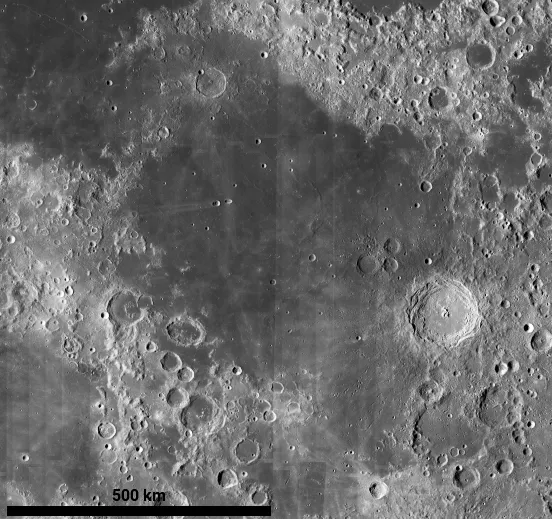
English name Sea of Fecundity
Lat. 7.8 S
Long. 51.3 E
Diameter 909km
The main basin of Mare Fecunditatis formed in the pre-Nectarian era – the earliest time period just after the Moon formed. However, material surrounding it dates from later eras.
The crater overlaps with surrounding Nectaris, Tranquillitatis and Crisium basins. It is unusual in that it has no ‘mascons’ – invisible concentrations of mass hidden below the surface of most lunar mare, which are great enough to pull orbiting spacecraft off course.
Mare Frigoris

English name Sea of Cold
Lat. 56.0° N
Long. 1.4° E
Diameter 1596km
The northernmost sea, along the top of the Imbrium and Serenitatis basins, Mare Frigoris has an intriguing elongated shape, averaging only 250m wide but stretching to over 1,400km in length.
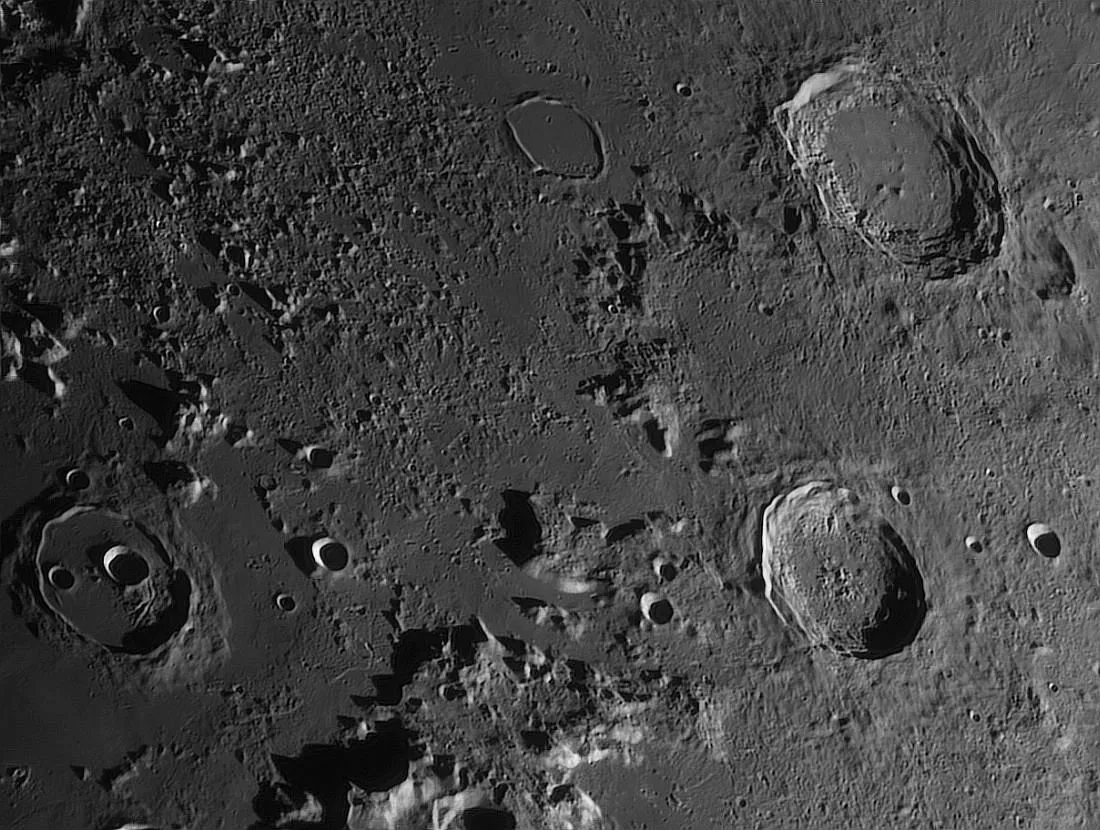
Notable features include ejecta from the 40km diameter Harpalus crater that covers a large portion of Frigoris’s floor in the west and, on the south shore, the scars of 88km Aristoteles and 67km Eudoxus, both complex craters with terraced walls.
Mare Humboldtianum
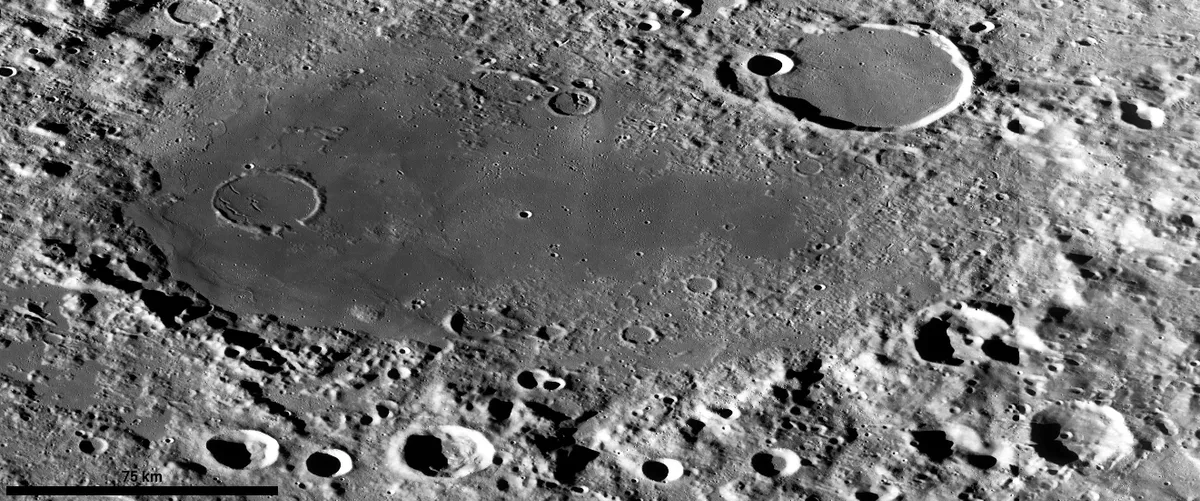
English name Sea of Alexander von Humboldt
Lat. 56.8 N
Long. 81.5 E
Diameter 273km
Located to the east of Frigoris, Mare Humboldtianum is right on the northeastern limb of the Moon. Due to the slight wobble of the Moon from Earth (an effect known as libration), the sea is sometimes hidden from view.
The name is a reference to this location, bridging the gap between the known and the unknown, and so it was named after Alexander von Humboldt, a Prussian natural scientist born in 1769 who was famous for travelling the world and exploring places no European had visited before.
Mare Humorum
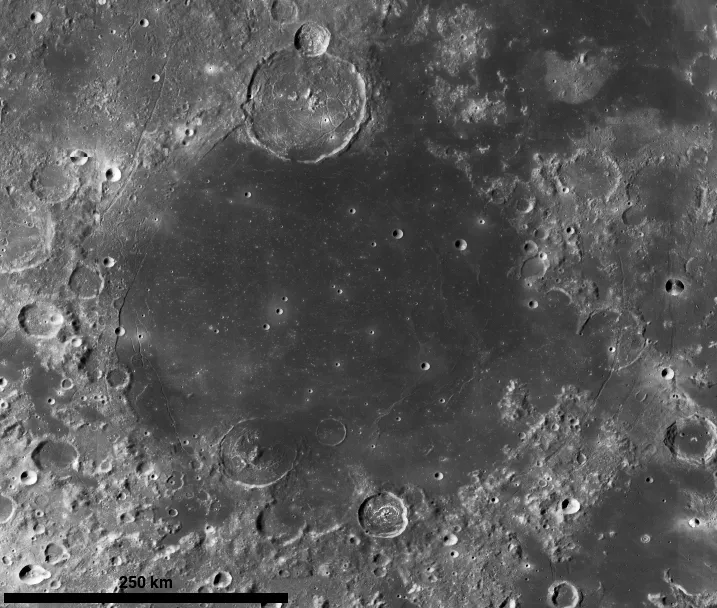
English name Sea of Moisture
Lat. 24.4 S
Long. 38.6 W
Diameter 389km
The lava layer of Mare Humorum is thought to exceed 3km in thickness at the basin’s centre. It’s also home to a major mascon, a mass concentration created by a collection of dense material below the surface that is large enough to affect the Moon’s gravitational pull.
For these reasons, it’s an area of great scientific interest, allowing planetary scientists to study the relationship between lunar mare filling, basin tectonics and the thermal evolution of a major mascon maria.
Mare Imbrium
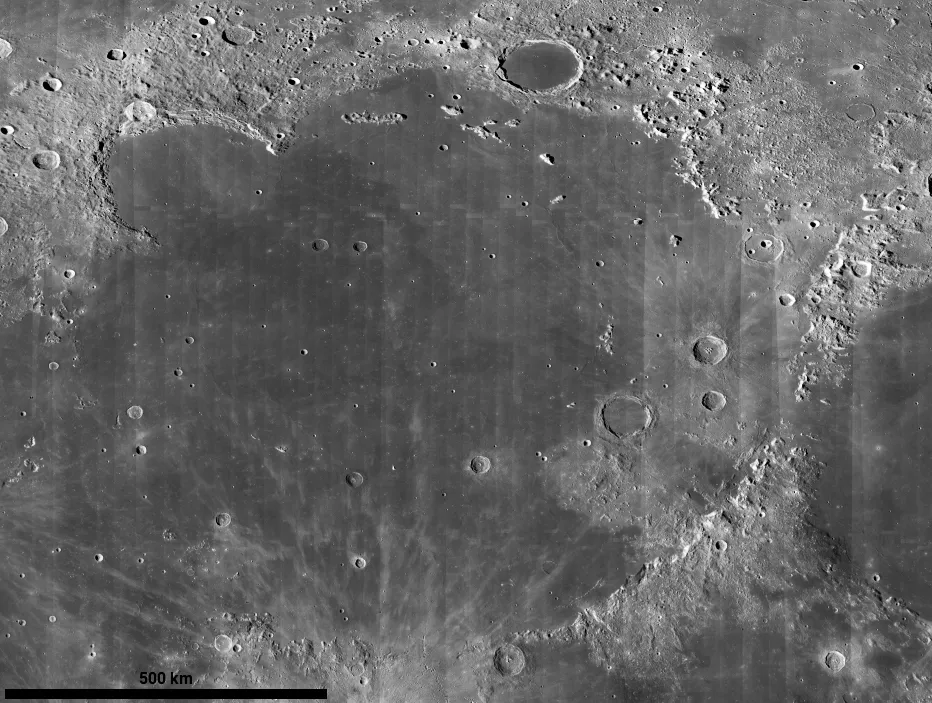
English name Sea of Showers
Lat. 32.8 N
Long. 15.6 W
Diameter 1123km
As the largest basin on the lunar nearside, Mare Imbrium requires a bit of mobility to explore properly and has been visited by three different rovers: the Soviet Union’s Lunokhod 1 rover in 1970, NASA’s Apollo 15 rover driven by David Scott and James Irwin in 1971, and the Chinese Chang’e 3 lander and its rover Yutu in 2013.
The basin is surrounded by a ring of mountains, rising up as much as 7km above the mare floor, and there are signs of ejecta radiating out as far as 800km from the crater.
Mare Ingenii
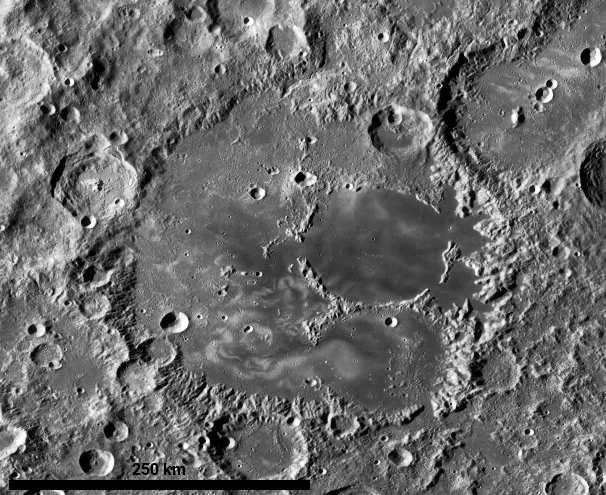
English name Sea of Cleverness
Lat. 33.7 S
Long. 163.5 E
Diameter 318km
Located on the far side of the Moon, Mare Ingenii makes up part of the South Pol-Aitken basin – a huge lunar feature that covers most of the southern hemisphere. The region contains the 112km wide Thomson crater.
The floor of Igenii is covered in dramatic swirls of light and dark volcanic material, the pattern of which is believed to reflect the localised magnetic field of the region back when the Moon's lava was still molten.
Mare Insularum

English name Sea of Islands
Lat. 7.5 N
Long. 30.9 W
Diameter 513km
Insularum is hemmed in by the prominent Copernicus crater to the east, the Kepler crater to the west and joins up with the large Oceanus Procellarium in the southwest.
The northern edge is bordered by the Montes Carpatus while the south merges into Mare Cognitum. It was only named in 1976.
Mare Marginis

English name Sea of the Edge
Lat. 13.3 N
Long. 86.1 E
Diameter 420km
Located on the ‘edge’ of the lunar limb, Mare Marginis is unlike most of the nearside maria. It has an irregular outline, appears to be thinner and doesn’t have an apparent impact crater associated with it.
Instead, it seems to have been a region of the highlands that was low enough for lava to reach the surface. It is covered with swirls of lighter material most likely reflecting the magnetic field present when the lava formed.
Mare Moscoviense

English name Sea of Moscow
Lat. 27.3 N
Long. 147.9 E
Diameter 277km
One of the few lunar mare on the far side of the Moon, Moscoviense sits as a dark spot alone in the northern hemisphere. It was first seen in images from the Soviet Luna 3 spacecraft – the first spacecraft to return pictures of the lunar far side and was named after the nation’s capital city.
Mare Nectaris
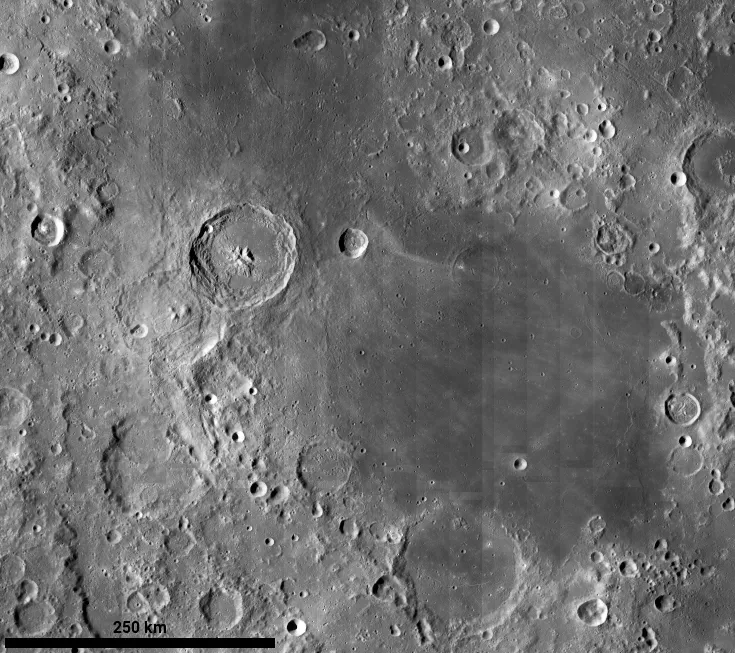
English name Sea of Nectar
Lat. 15.2 S
Long. 35.5 E
Diameter 333km
Mare Nectaris is a small lunar mare just south of Mare Tranquillitatis, and bordered by the Montes Pyrenaeus along its eastern edge. The region is in a wider impact basin measuring 860km across (it was this impact that created the Pyrenaeus), but the lava that created the mare didn’t flood the basin until some time later, as is apparent from the lack of impact craters in the region.
Mare Nubium

English name Sea of Clouds
Lat. 21.3 S
Long. 16.6 W
Diameter 715km
Located to the southeast of Oceanus Procellarum, Mare Nubium is part of the pre-nectarian system, meaning it dates back to the earliest eras of the lunar surface. To the west lies the prominent Bullialdus crater.
Nubium’s northern portion is split in two by a spur of higher ground known as the Fra Mauro highlands, the location of the Apollo 14 landings.
Mare Orientale
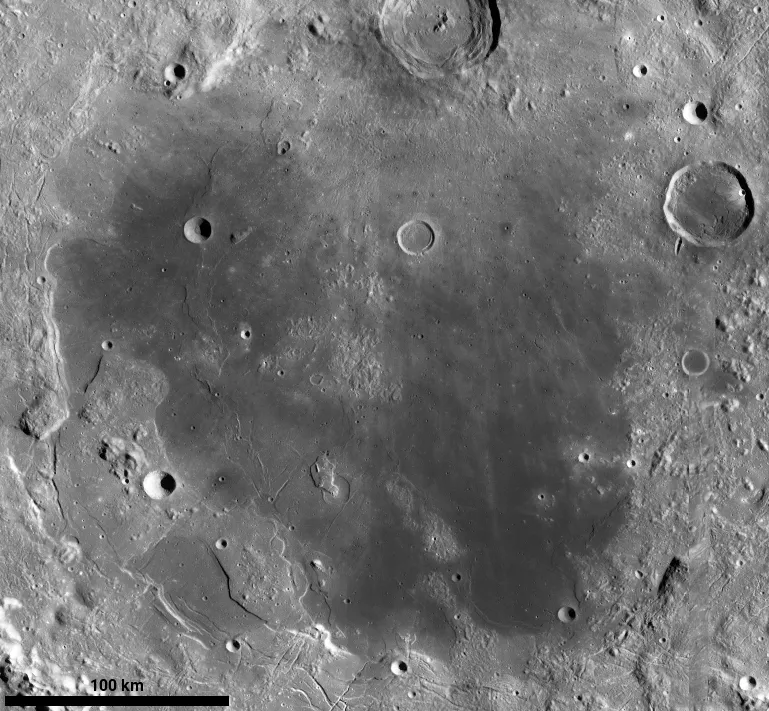
English name Eastern Sea
Lat. 19.4 S
Long. 92.8 W
Diameter 327km
Mare Orientale is located in the basin created by an ancient meteor impact. The region wasn’t as flooded by lava as other such basins, meaning the multi-ring structure of the basin floor created as the spacerock rebounded after the impact is still clearly visible.
Oceanus Procellarum
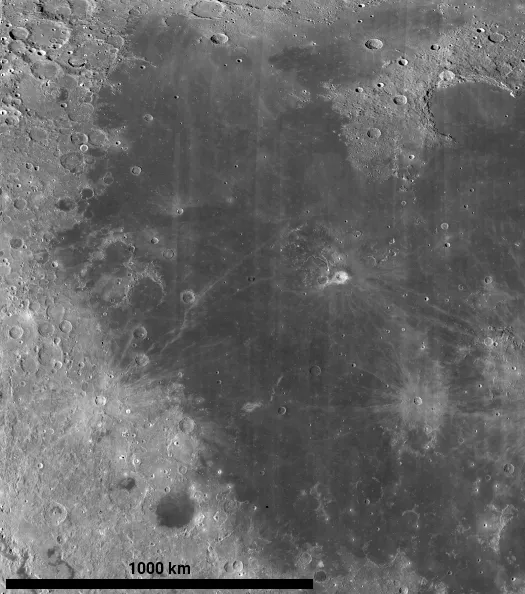
English name Ocean of Storms
Lat. 18.4 N
Long. 57.4 W
Diameter 2,568km
Due to its huge size, Procellarum isn’t just a sea – but an ocean! Its large size suggests it was created by more than a single asteroid impact, but might have been effected by the Moon’s own early geological processes.
The GRAIL mission found several large rift valleys created by tectonic faults cracking the land before being flooded with lava. However, these are all buried beneath a remarkably featureless surface that is only peppered with small craters and only one large rayed crater, Kepler, at its centre.
Mare Serenitatis
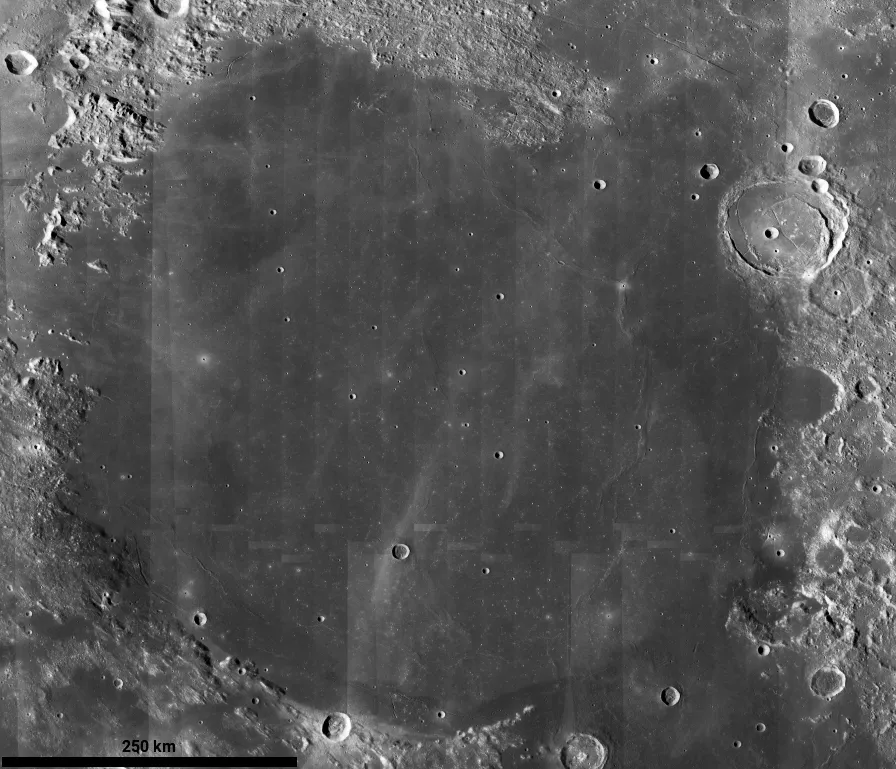
English name Sea of Serenity
Lat. 28.0 N
Long. 17.5 E
Diameter 707km
One of the more prominent seas on the lunar near side, Mare Serenitatis is very circular in shape, usually forming the left eye of the ‘man in the Moon’. Mare Serenitatis was visited both by the crew of NASA’s Apollo 17 in 19XX and by the Soviet Union’s Lunokhod 2 rover in 19XX (also known as Luna 21).
Rock samples returned by the Apollo 17 crew revealed that surface of the mare formed 3.8 to 3.9 billion years ago. Almost 50 years later, the Israel Aerospace Industries' Beresheet lander attempted to land in the sea, but crashed shortly before landing.
Mare Smythii
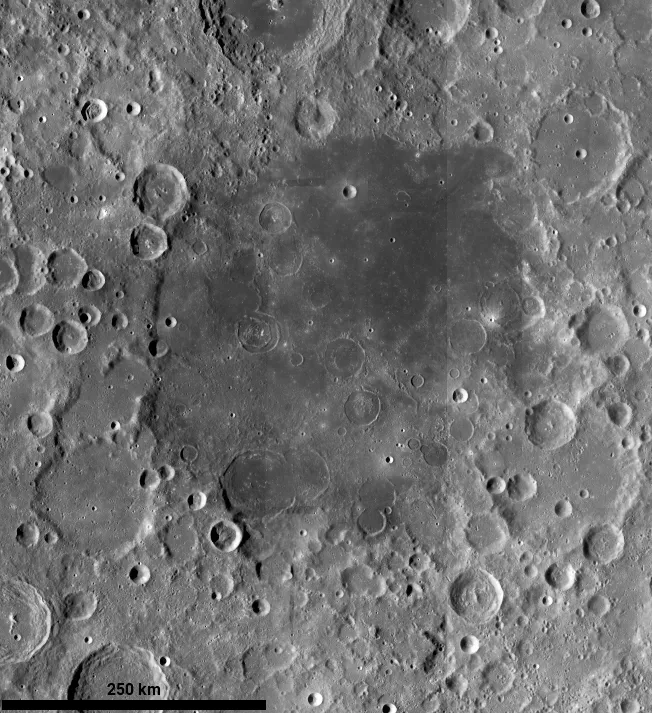
English name Smyth’s Sea
Lat. 1.3 N
Long. 87.5 E
Diameter 373km
In reality, Mare Smythii is circular, but it is so near the lunar limb that from Earth it appears elliptical. In fact, some of the mare curves around onto the far side. The craters within the mare appear to have a large number of fractured floors, most likely caused by lava rising up from underneath.
Mare Spumans
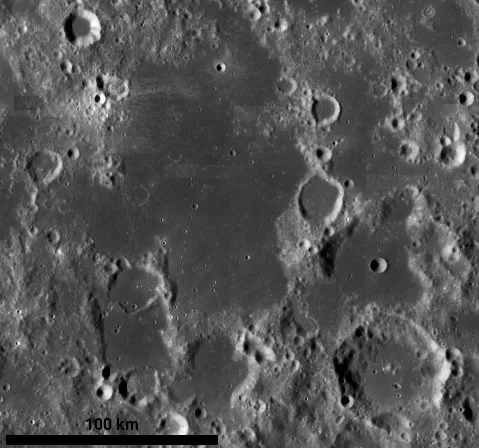
English name Foaming Sea
Lat. 1.1 N
Long. 65.1 E
Diameter 139km
Mare Supmans is one of the smaller seas located on the raised edge of the Crisium basin, surrounding the larger Mare Crisium. It is just to the south of Mare Undarum. On its western rim is the bright white Petit crater, surrounded by bright rays of ejecta.
Mare Tranquillitatis

English name Sea of Tranquility
Lat. 8.5 N
Long. 31.4 E
Diameter 873km
Made famous as the location where Neil Armstrong took ‘one small step for man’ during the Apollo 11 landing, Mare Tranquillitatis is a very flat region, with only 500m elevation difference between the highest and lowest points in the basin.
The mare has an irregular edge, which it shares with the basins of Serenitatis and Nectaris. It has a higher metal content than surrounding lunar rock giving it a blue tinge - not to be confused with a 'blue Moon', however! - , though this only really stands out in heavily processed images.
If you'd like to try and spot this region for yourself, read our guide on how to find Apollo 11's landing site.
Mare Undarum
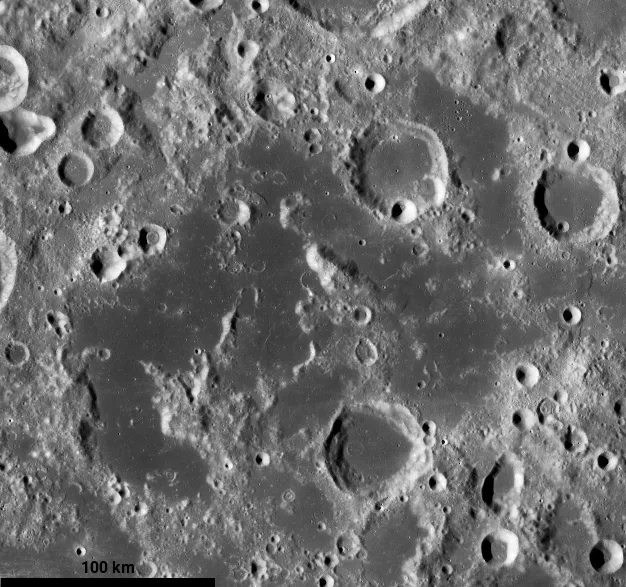
English name Sea of Waves
Lat. 6.8 N
Long. 68.4 E
Diameter 243km
Mare Undarum is an irregular shaped sea without the smooth surface seen in many other maria. In the early 1800s, when lunar astronomer Johann Mädler was surveying the region, he discovered dark streaks throughout the region and speculated that they might be caused by vegetation growing across the surface: a forgivable conclusion considering he was looking through an early 95mm refractor.
Mare Vaporum

English name Sea of Vapors
Lat. 13.3 N
Long. 3.6 E
Diameter 245km
Near the centre of the Moon’s visible face lies the circular Mare Vaporum. It’s bordered to the north by several mountain ranges, including the impressive Apennine’s which tower 5,000m over the floor of the crater. The mare contains only one significant crater, the 39km wide Manilium.
Images of lunar maria
Below is a selection of images of the Moon showing prominent lunar maria. For advice on lunar imaging, read our guide on how to photograph the Moon.

